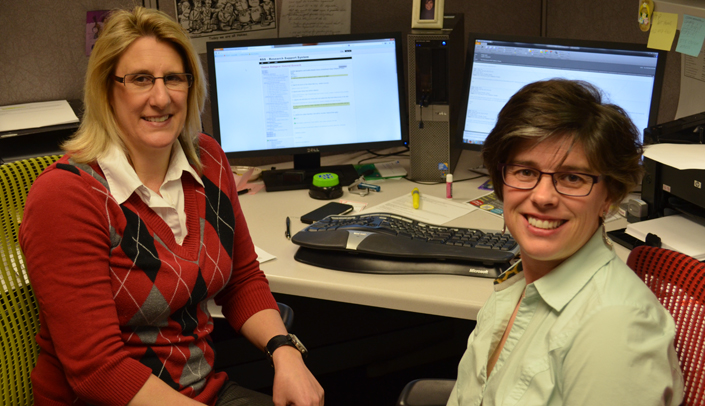When Ernest Prentice, Ph.D., became co-chair of the Institutional Review Board (IRB) in the early 1980s, protocol records were kept on index cards.
“We’d literally put down the date the protocol was reviewed and the date it had to be re-reviewed,” he said.
They’ve come a long way.
The IRB is now completing a transition to an electronic system. Currently, investigators submit information entirely electronically; the IRB is moving aggressively toward phasing out all paper use.
“Right now, the investigators do not submit paper copies of anything to us,” said Sue Logsdon, an IRB administrator. The IRB still provides paper packets to the reviewers, but that’s only temporary.
“It’s going to be a transition — but ultimately it will be a time saver as well as a paper saver.”
The key to the transition, Dr. Prentice said, is the historically effective collaboration of IT and the IRB.
“A number of commercial companies developed electronic IRB systems,” he said. “When we decided to move away from paper in 2010, we looked at a number of these vendors.
“Together with IT, we thought we could develop a better product,” he said. “We were successful because of the interaction between our staff and IT, particularly Sue Logsdon and Gail Kotulak, who worked hand-in-hand with Teresa Pisasale, Lee Trant and Andy Edison in IT to develop the application.”
Logsdon worked closely with the IT department on the new system.
“There are very few things we take to IT that they can’t do,” she said. “We’ve come up with some pretty big things, and each time they handle it.”
After taking the application live in 2012, the IRB is quickly approaching the point where paper will be unnecessary. The relatively quick evolution is a testament to teamwork, said administrator Gail Kotulak.
“IT developed our database back in the late 1990s, and their understanding of IRBs and what they require is exemplary,” she said.
Although the first database was “rather basic, ” Dr. Prentice said, “as the IRB world evolved, there were many more fields that were added to our database — and IT at every step of the way worked with us.
“So today, for this new effort, we have one of the more sophisticated databases in the country — because we were able to work so closely with IT from the very beginning.”
